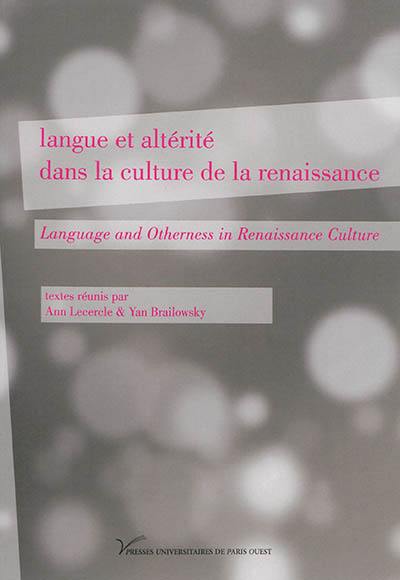
Paru le 01/12/2008 | Broché 194 pages
Public motivé
Au coeur de l'organisation sociale de la Grèce antique et de l'institution théâtrale s'inscrivait Dionysos, « la figure de l'Autre » par excellence (Louis Gernet). Le théâtre élisabéthain, quant à lui, plaçait le festif ou l'Altérité prohibée dans un lieu alternatif, de l'autre côté de la Tamise, comme pour mieux confronter la ville au-delà de ses frontières. Entre les murs du théâtre, les garçons jouaient les rôles de femmes - fait unique en Europe à l'époque - alors que le langage était lui-même « autre », un mélange instable d'idiomes naturels et de langues vernaculaires issues des cultures dominantes d'Europe continentale, marquant la disparition progressive de la langue de l'« Église d'Antan », le latin, de plus en plus souvent perçu comme la langue de l'Autre suprême, le Pape Antéchrist.
Ce volume tente de montrer la diversité topologique de l'Altérité dans la culture de la Renaissance en s'intéressant à la fois à la langue « autre » (la calomnie, l'insulte, le jargon des colporteurs, la traduction, la prophétie), comme aux figures de l'« Autre » (le fantôme, le bâtard, le garçon acteur travesti, l'homme des bois...)
In Ancient Greece, the institution of the theatre marked the installation, at the centre of society, of Dionysus, « the figure of the Other » par excellence (Louis Gernet). The Elizabethan theatre accommodated the festive or forfended Other from a vantage point, on the other side of the River Thames, confronting the city just beyond its limits. Within the walls of the theatre, women were played by boys, afact unique in contemporary Europe, while the tongue in which they played was constitutively inhabited by Otherness, an unstable melting pot of natural idioms and vernaculars from the dominant cultures of the Continent, marking the eclipsé of the language of the « Old Church », Latin, increasingly identified with the language of the ultimate Other, the Roman Antichrist.
This volume explores the topology of Otherness in Renaissance culture by addressing otherness in utterance (slander, insult, underworld cant, translation, prophecy), as well as with the figures of the Other (the ghost, the bastard, the transvestite boy actor, the Green Man...)